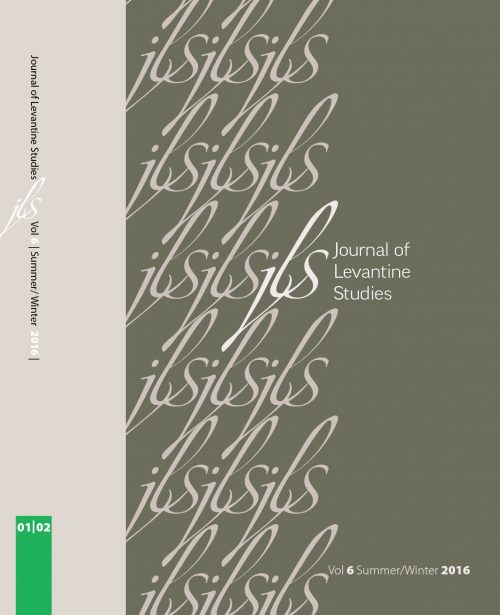-
Add to cartQuick view
James Bryce and the Origins of the Armenian Question
Free!James Bryce's association with Armenia became well known from his, and Arnold Toynbee's, famous Blue Book on the Armenian Genocide (1916). However, only a handful of studies have been published about Bryce's life-long, and especially about his “early,” Armenian engagements. As this article aims to show, his Armenian mission from the 1870s until the massacres of 1894–1896 deserves greater attention. In these years Bryce attempted to stir up awareness of the suffering of the Armenian communities in the Ottoman Empire. These efforts were mainly aimed toward the internal British scene. Some followed Bryce's lead and supported his Armenian cause, while others doubted his reports and regarded them as “exaggerations.” Bryce's comprehension of the Armenian Question resulted from his general assessment of the power struggle between the major European powers. This struggle has in recent years become, as seen for instance in Donald Bloxham's book The Great Game of Genocide (2005), a central theme in the study of the Armenian Question. In the context of this power struggle, especially between Britain and Russia, Bryce had, quite uniquely, grasped the ominous potential of the Armenian Question by the end of the 1870s. As elaborated in the article, despite Bryce's firm position about the urgent need to intervene in Armenia, there was an almost unbridgeable gap during these years between his moral or ideological stance and the actual abilities of the British government. In short, a breach existed between Bryce's compulsion and Britain's realpolitik constraints.
Add to cartQuick view -
Add to cartQuick view
Lord Bryce and the Armenians in German Propaganda during World War I
Free!It is often assumed that the Armenian Genocide was not debated in wartime Germany and in the newspapers because of censorship. While the full extent of what was happening was indeed not discussed, the violence against the Armenians was debated. One of the focal points in 1915 was an intervention by Lord Bryce and others in the British House of Lords. The debate in the German newspapers around Bryce illustrates the breadth of anti-Armenian sentiment, the scope of discourses justifying the alleged violence, and Germany’s overall entanglement with the Armenian Genocide.
Add to cartQuick view -
Add to cartQuick view
Terrorist and Refugee in the Mediterranean—A European Dilemma
Free!The migration crisis in Europe that coincided with a wave of terrorist attacks attributed to ISIS has exacerbated the dilemma between the desire of states to secure their territory and the European tradition of open borders and inclusion. European states have redefined both their migration policies and security measures in a climate of crisis and emergency that does not accurately reflect either the issues that have contributed to the current instability or the long-term nature of the terrorist threat. Instead, a systematic conflation is created between terrorism and migration by a number of states in the Mediterranean region. The aim here is to identify this conflation and show how it is manifested in the juxtaposition of exclusion and crisis narratives and the adoption of legal measures that overlap both security and migration. The article introduces preliminary findings on the topic and forms the basis for further research that might provide answers for states and for the EU as an organization that will address security agendas and migration policies within the framework of the European human rights tradition. Focusing on counterterrorism and migration measures and using policies and official statements by government officials, the article examines the links and influences between them.
Add to cartQuick view -
Add to cartQuick view
“Anticonverso” Trends among Converted Jews in Seventeenth-Century Europe
Free!In the second half of the sixteenth century, and especially during the seventeenth century, the Iberian Peninsula became a magnet for Jews who had never been conversos, or who came of age as Jews. These men, who produced anti-New Christian discourses—as can be seen in some inquisitorial trials or in great intellectual debates—are perhaps best represented by João Baptista d’Este. In some cases New Christians were the major targets of their diatribes, even when their objective was, in an essentialist plan, to reiterate the fallaciousness of the Jews and of Judaism. The pressing question, also reiterated by Old Christians, was the New Christians’ supposed duplicity, often equated with iniquity, from which the new catechumens wished to distance themselves. The proof of the “falsity and ambiguity” of the conversos resorted to examples that were sometimes manufactured from their everyday life and from a “failed” plan to integrate another minority, the Moriscos, though their resounding expulsion became an equally ideal destiny to apply to the New Christians.
Add to cartQuick view
- Home
- About JLS
- Issues
- Vol. 9 No. 1 | Summer 2019
- Vol 8 No 2 Winter 2018
- Vol. 8, No. 1: Summer 2018
- Vol. 7, No. 2: Winter 2017
- Vol. 7, 1: Summer 2017
- Vol. 6, Summer/Winter 2016
- Vol. 5, No. 2 Winter 2015
- Vol. 5, No. 1 Summer 2015
- Vol. 4, No. 2 Winter 2014
- Vol. 4, No. 1 Summer 2014
- Vol. 3, No. 2 Winter 2013
- Vol. 3, No. 1 Summer 2013
- Vol. 2, No. 2 Winter 2012
- Vol. 2, No. 1 Summer 2012
- Vol. 1, No. 2 Winter 2011
- Vol. 1, No. 1 Summer 2011
- Blog
- dock-uments
- Subscribe
- Submit
- Contact



